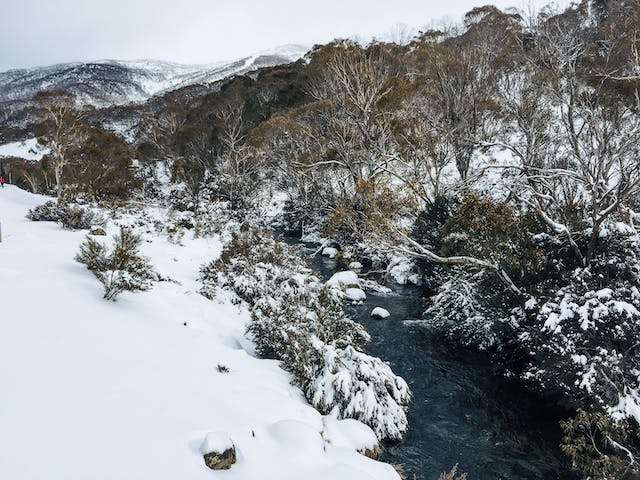Discover the Interesting Impacts of Snow in Australia on Regional Ecosystems
Despite its credibility for sun-soaked landscapes, Australia also flaunts regions blanketed by snow-- a sensation that profoundly affects the nation's unique ecological communities. The shielding buildings of snows secure flora and animals among the chilliest wintertimes, while the melting snow nurtures rivers and marine life.
The Unforeseen Regions of Snowfall in Australia
Although Australia is frequently related to sandy beaches and sun-scorched landscapes, certain regions remarkably experience snowfall. The high nation areas of New South Wales, Victoria, and Tasmania are specifically recognized for their winter snow. The Snowy Hills in NSW, for example, receive bountiful seasonal snow, offering a raw comparison to the country's normal hot, arid climate. The Victorian Alps and components of Tasmania additionally see annual snowfalls, changing the landscape right into a winter months heaven. These areas are not just abnormalities but essential components of Australia's diverse environment system. The existence of snow in these areas considerably affects regional environments, consequently affecting the country's one-of-a-kind biodiversity. The specific impact on Australia's distinct vegetation will be reviewed in the following section.

How Snow Impacts Australia's Distinct Flora
These plants have actually evolved to endure in severe problems, with snow serving as a protective covering from harsh winds and freezing temperature levels. The snow likewise adds to the dampness material of the soil, providing required hydration for plant life during the completely dry summertime months. In essence, the snow affects the timing of blooming and seed dispersal, the growth rates, and the survival of many plant species, showcasing the intricate interplay between environment and plants in Australia.

The Adjustments of Australian Fauna to Snowfall
Simply as Australia's plants has actually adapted to the wintery conditions, the regional animals too, display remarkable adaptations to the snowfall. Types like the Mountain Pygmy-possum, the only Australian marsupial known to hibernate, have evolved approaches to survive in snowy atmospheres. It utilizes the snow as insulation, hibernating in rock gaps underneath the snow to remain warm. Similarly, the Snow Skink, a varieties of reptile, transforms its colour to white throughout winter months, providing camouflage against predators. Birds such as the Snowy Mountains' Crimson Rosella additionally change their diet regimens to eat offered food sources during cooler durations. Therefore, in spite of the severe conditions, Australian fauna demonstrates a resistant and adaptive nature, guaranteeing their survival in areas experiencing snowfall.
The Duty of Snow fit Regional Ecological Communities
In forming the regional ecosystems, the function of snow in Australia is both multilayered and extensive. It affects the circulation of plants and fauna, mainly specifying the biodiversity of sub-alpine and alpine regions. Snow offers an important water source, feeding rivers and reservoirs as it melts, therefore sustaining a variety of water life forms. Furthermore, snow functions as an insulator, shielding ground-dwelling microorganisms from severe cold. It plays a substantial duty in soil formation and nutrient biking. The periodic freezing and thawing of dirt caused by snowfall fosters the malfunction of rocks, boosting dirt fertility. Subsequently, the visibility of snow forms the vegetation patterns, animal behavior, and general sustainability of Australia's unique ecological communities. Does It Snow In Australia.

The Future of Snowfall in Australia: Ramifications and predictions

Given the essential function snow plays in shaping neighborhood ecosystems, the future of snowfall in Australia visit here is attracting increasing attention from conservationists and scientists. Less snow might result in lowered water availability in towering regions, detrimentally influencing wildlife habitats and plant life. The tourism sector, heavily reliant on the winter season snow season, might likewise face substantial obstacles.
Final Thought
The role of snow in Australia's ecosystems is crucial yet frequently ignored. It works as a guard, a nurturer, and a shaper of diverse alpine varieties, adding to the splendor of Australia's high country. As weather patterns remain to change, recognizing the effects and potential makeovers of these snow-influenced communities is essential. Therefore, the snow in Australia is greater than a natural spectacle; it's a crucial player in the nation's environmental narrative.
Regardless of its online reputation for sun-soaked landscapes, Australia additionally flaunts regions blanketed by snow-- a sensation that greatly affects the country's distinct ecological communities. It uses the snow as insulation, hibernating in rock holes under the snow to stay cozy - Does Australia Get Snow.In shaping the look at this site regional environments, the duty of snow in Australia is both multilayered see this and profound. The presence of snow shapes the plants patterns, animal behavior, and total sustainability of Australia's unique ecosystems
Given the critical role snow plays in shaping regional ecosystems, the future of snowfall in Australia is drawing increasing interest from conservationists and researchers.